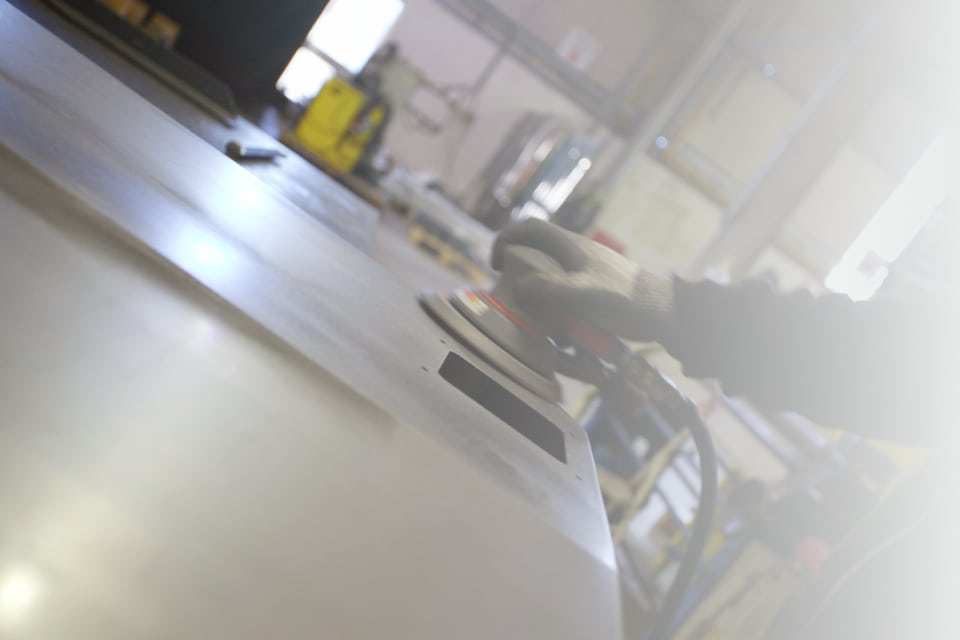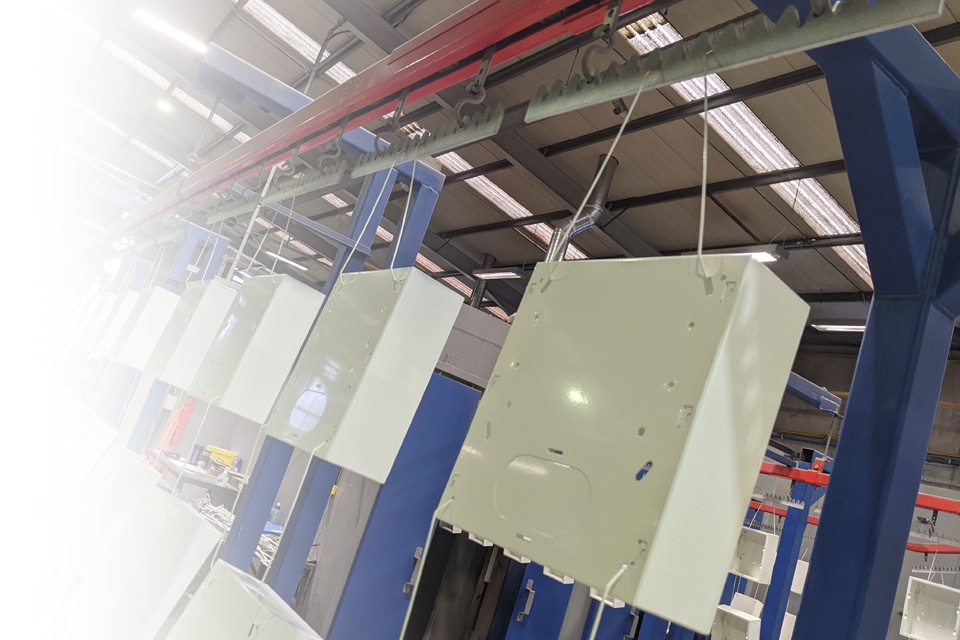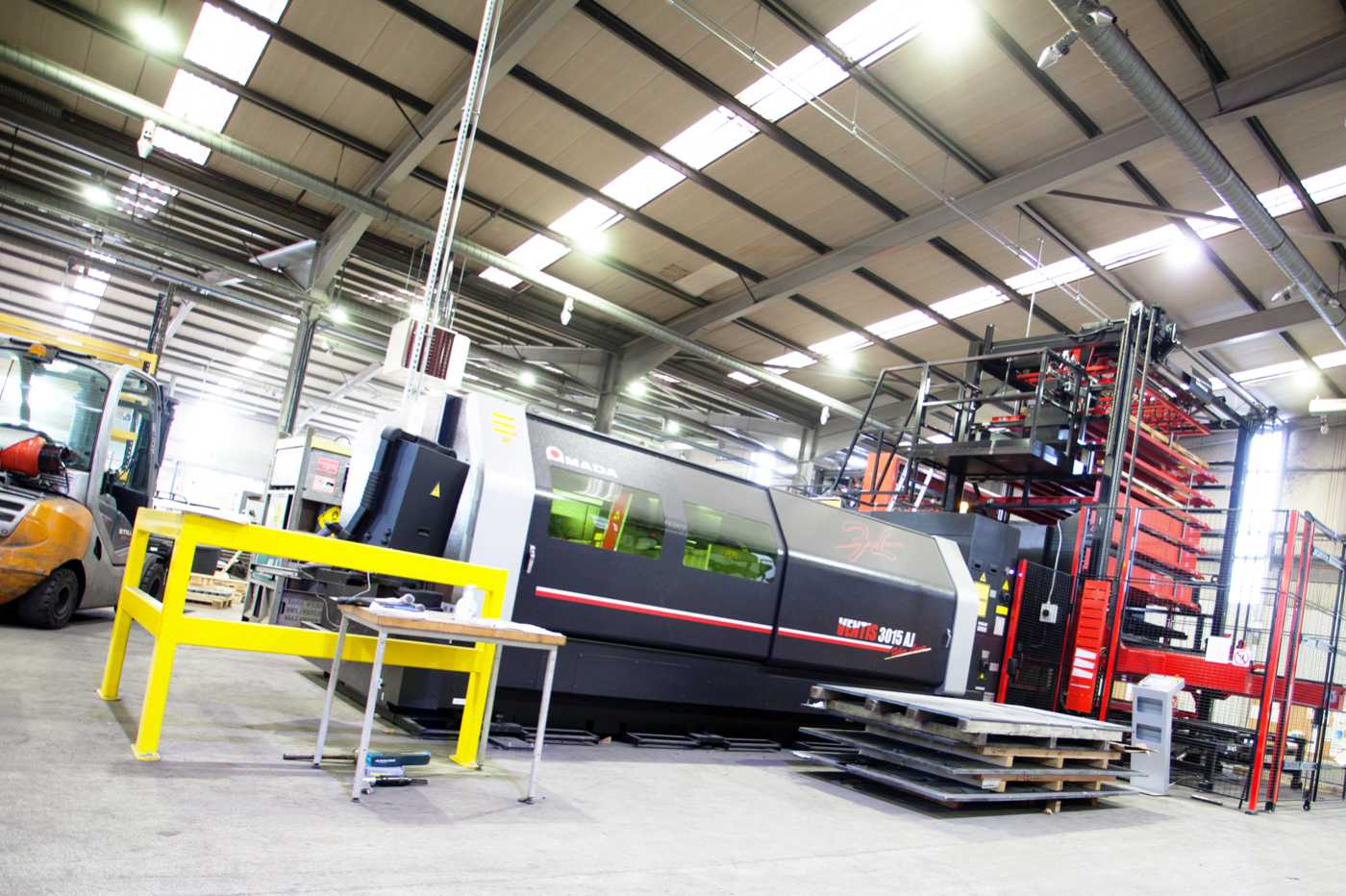Diverse Finishing Choices Available
Choose from powder coating, grinding, deburring, zinc electroplating, anodising and galvanising.
Stringent Quality Standards
All treatments undergo rigorous inspections before dispatch or assembly.
Full-Service Solutions
From laser cutting to forming and welding, our range of services means we can meet any finishing and assembly challenges

Metal Finishing Services
All our treatments are subject to rigorous quality standards and checks and undergo a full inspection before being dispatched or moving to assembly.
Our Metal Finishing And Assembly Facilities Can Be Shaped To The Client’s Requirements
Our manufacturing facilities in Telford are used to meet the finishing and assembly requirements of our clients are flexible enough to be created as a bespoke space for each individual project. Rather than simply offering a workshop that can meet a one-off brief, we work as part of the client’s team, creating a working relationship based on transparency and communication.
We’ll take the problems a client brings to us and turn them into solutions, working how the client wants to work whether that means building to order, Kanban, or shipping to stock.
CNC Amada Equipment
Our fully-managed assembly program is a part of a full-service offering that encompasses CNC laser cutting, CNC forming, CNC punching, and welding. Using industry-leading CNC Amada equipment. The range of services we offer, coupled with the variety of sectors we’re used to working with, means that we can meet any finishing and assembly challenges our clients throw at us.
We can pre-build and test sub-component assemblies, using our knowledge of a wide range of production methods and understanding of the latest technologies in the sheet metal field to create exactly what each client needs.
In addition to the quality and precision of our sheet metal finishing and assembly services, we offer solutions that are precision-engineered to fit with the timings of each client. If needed we can delay the final integration of components until a customer order is placed and then ship the final product assemblies direct to the client’s customer with the shortest possible lead times.

Metal Finishing FAQs
Metal finishing refers to the process of modifying the surface of a metal object to improve its appearance, corrosion resistance, and other properties. It can involve a variety of techniques, such as plating, coating, polishing, and more.
The metal finishing process typically begins with the preparation of the surface, which may involve cleaning, degreasing, and sanding. Next, the desired finish is applied, either through a chemical process or a mechanical process (such as grinding or polishing). The object is then often rinsed and dried before final inspection.
The purpose of finishing surfaces is to improve the appearance, corrosion resistance, and other properties of the object. Finishing can also make the object easier to clean and maintain. In some cases, finishing can also improve the performance of the object, such as by increasing its electrical conductivity or promoting adhesion.
There are several reasons why metal finishing is important:
- Helps to reduce wear and tear: A well-finished metal surface is less likely to suffer from abrasive wear and other forms of damage.
- Enhances electrical conductivity: In some cases, metal finishing can improve the electrical conductivity of a surface.
- Promotes adhesion: Metal finishing can also create a smoother, more uniform surface that is more conducive to adhesion.
- Improves appearance: Metal finishing can also improve the appearance of an object, making it more attractive and visually appealing.
There are several advantages to metal finishing:
- Enhanced appearance: Metal finishing can improve the appearance of an object, making it more visually appealing and attractive.
- Resistance: Finishing can also enhance the corrosion resistance of a metal surface, making it less prone to rust and other forms of deterioration.
- Easy cleaning: A well-finished metal surface is often easier to clean and maintain, which can be important in certain applications.
There are a few disadvantages to metal finishing:
- Weakening the surface strength: In some cases, the metal finishing process can weaken the strength of a surface, making it more prone to damage.
- Labour intensive: Metal finishing can be a labour-intensive process, which can increase the cost of production.
A powder coat finish is a type of finish that involves applying a layer of protective or decorative material to the surface of the object. For example paint or a clear coat.
To apply powder coatings, you use a process called electrostatic spray deposition (ESD), which gives the powder its electrostatic charge. When particles in the powder are charged, they become attracted to the grounded, metal part. This attraction causes the powder to stick to the part. It is then cured under extreme heat. Powder coating is a popular method of finishing metal objects because it provides a durable, uniform, and attractive finish that’s resistant to scratching, and fading.
- Construction. Tractors, trailers, forklifts and other machinery need a tough, protective layer. Powder coating stands up against the elements and future wear and tear.
- Automotive. Powder coatings ride with you through the sun, wind, rain and snow every day. Numerous automotive parts are powder coated, including wheels, bumpers, door handles and valve covers.
- Housing. Powder coatings are also found on shutters, gutters, fencing and aluminium windows. How long does powder coating last? It’s made to last years while exposed to weather and strong light, day in and day out. Powder coating is with homes and buildings for the long haul.
- Other. Playground equipment, enclosures, gas pumps, fire extinguishers and even ski poles are all items that are commonly powder coated.
There are many types of finishes that can be used on metal, including:
- Plating: Plating involves applying a thin layer of a different metal to the surface of the object using a chemical process.
- Coating: Coating involves applying a layer of protective or decorative material to the surface of the object. For example paint or a clear coat.
- Polishing: Polishing involves using abrasive materials to smooth and shine the surface of the object.
- Grinding: This involves using abrasive materials or tools to remove material from the surface of the object to create a smoother, more uniform finish.
- Sandblasting: Sandblasting involves using high-pressure streams of abrasive particles to remove dirt or rust.
Still have questions? Email us on sales@wrekinsheetmetal.co.uk
